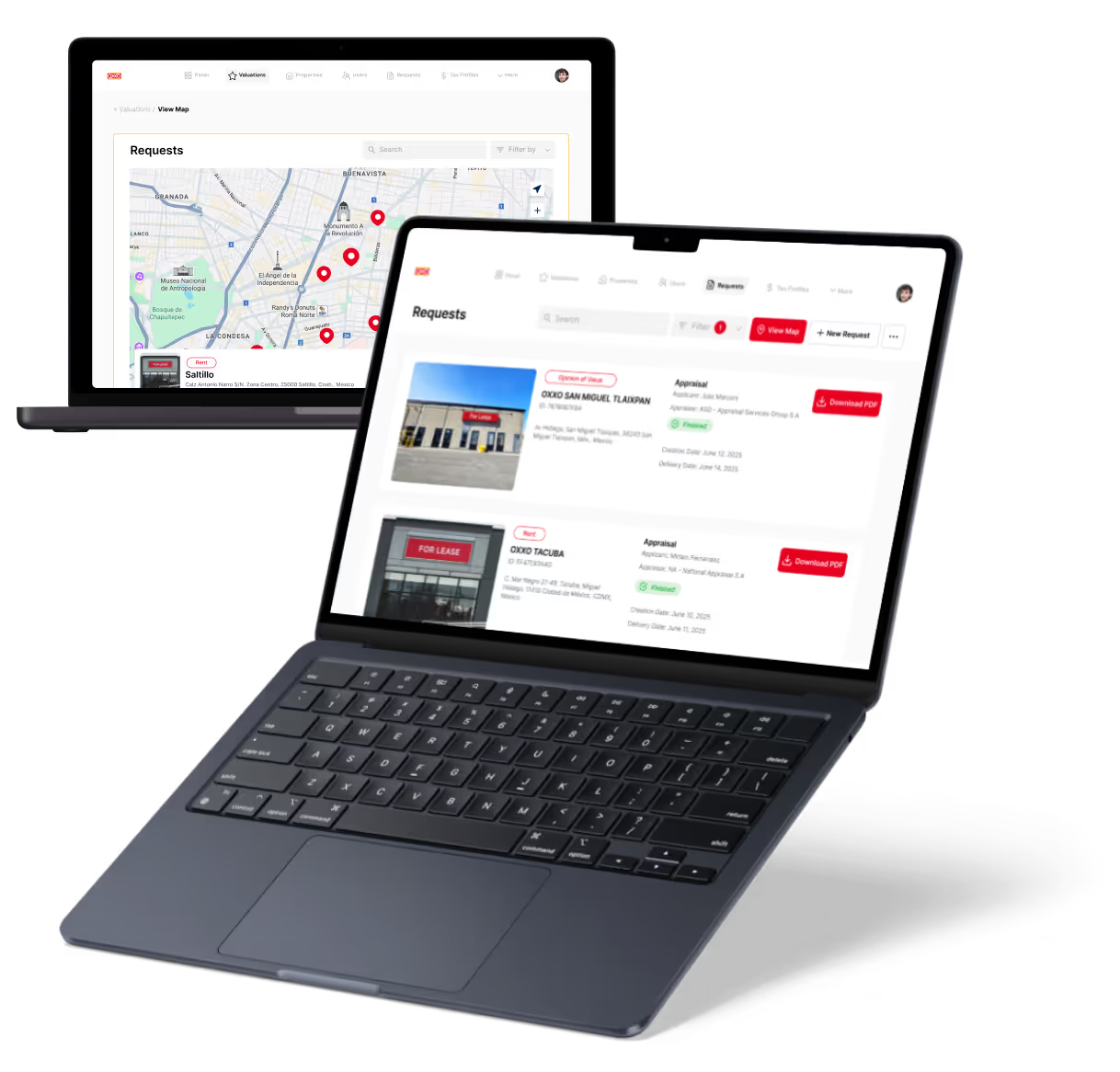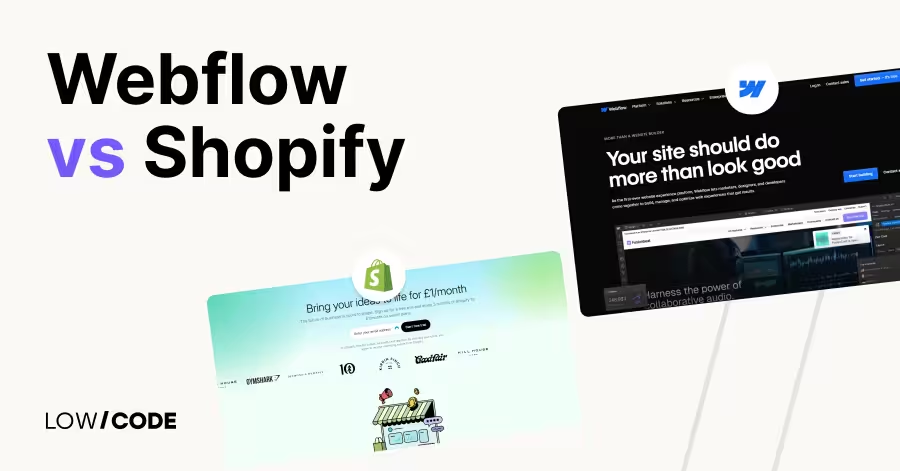FlutterFlow vs Mendix | 9 Factors to Decide the Best One
11 min
read
Compare FlutterFlow vs Mendix on design, backend, scalability, and enterprise features to choose the best low-code or no-code platform for your next app

App building has become faster and more visual with the rise of no-code and low-code platforms.
FlutterFlow, used by over 800,000 creators, helps teams and solo builders design mobile apps quickly with Google’s Flutter UI. Meanwhile, Mendix, trusted by global companies like Siemens and eBay, is one of the top low-code platforms for enterprise apps, supporting complex backend logic and system integrations.
If you’re deciding between these two, your choice depends on what you're building—whether it's a sleek mobile app or a large-scale enterprise tool. This guide compares them across 9 key factors like UI control, scalability, and integrations to help you choose the best platform for your goals.
Quick Comparison Table - FlutterFlow vs Mendix
1. What’s the core difference between FlutterFlow vs Mendix?
The core difference between FlutterFlow and Mendix lies in their target users and app focus.
FlutterFlow is a no-code tool built for designers and developers who want to create mobile and web apps using Google’s Flutter framework. It’s visual, beginner-friendly, and ideal for building UI-rich apps quickly with features like drag-and-drop, Firebase integration, and real-time testing.
Mendix, on the other hand, is a low-code enterprise platform made for complex, large-scale applications. It supports both no-code and pro-code development, letting teams build internal tools, customer portals, or core business systems. Mendix is built for businesses that need full control, workflow automation, and integration with systems like SAP or Salesforce.
So, if you want to build fast, beautiful apps for mobile or web, go with FlutterFlow. For complex business logic and enterprise-level needs, Mendix is the better fit.
2. Ease of use and learning curve
Let’s start by comparing how easy it is to use each platform for different types of users.
Is FlutterFlow beginner-friendly for non-developers?
Yes, FlutterFlow is designed to be beginner-friendly. It offers a visual drag-and-drop interface that helps non-developers build real mobile and web apps without needing code. The platform includes helpful onboarding, video tutorials, and a large widget library.
You can preview apps instantly, which makes testing and building faster. While learning FlutterFlow is easier than coding from scratch, you may still need some basic app knowledge to handle navigation and backend setup. For most solo founders or small teams, FlutterFlow is easy to pick up and use effectively.
Is Mendix easy to learn for business teams and IT pros?
Mendix is made for both business users and IT professionals. It offers two development modes—one for beginners (no-code) and one for advanced users (low-code). Business users can use drag-and-drop features to build simple workflows and apps.
Developers can add complex logic and integrations using Java or other coding tools. While it’s beginner-friendly in its basic mode, learning Mendix’s full capabilities can take time, especially if you want to build enterprise-level apps. It’s great for companies with mixed teams of analysts, product owners, and developers.
Read more about:
3. Design flexibility and UI customization
Next, let’s look at how much control each tool gives you over the app’s design.
What kind of UI design control does FlutterFlow offer?
FlutterFlow offers excellent design control. Since it’s based on Google’s Flutter framework, you can build pixel-perfect user interfaces with animations, custom themes, and responsive layouts. It supports Material Design and offers hundreds of widgets to create custom UIs.
You can also write custom code or import Figma designs to fine-tune your app’s look. For designers and frontend developers, FlutterFlow provides the freedom to make visually stunning apps without needing heavy backend setup. It’s one of the best no-code tools for UI control.
Can you fully customize UI in Mendix apps?
Mendix gives decent design flexibility, but it's not as visually focused as FlutterFlow. You can choose from pre-built templates, style elements, and create custom themes. However, most UI changes are done within the constraints of the Mendix structure.
For enterprise apps like dashboards, internal portals, or forms, it works well. But if you need highly customized, mobile-first UI with animations or complex transitions, you’ll likely find Mendix more limited unless you add custom code. It focuses more on functionality than frontend design freedom.
4. Backend and data management capabilities
Now let’s explore how both platforms handle backend logic and database support.
How does FlutterFlow handle backend and data integration?
FlutterFlow connects easily to Firebase for backend services. You can handle authentication, real-time databases, Firestore, and cloud functions using its visual interface. It also allows REST API integration, which means you can fetch or send data to any external service.
While it doesn’t come with a full backend like some low-code platforms, it gives you the tools to connect your app to external data sources. For apps that don’t require complex server logic, FlutterFlow’s backend options are more than enough.
What backend features does Mendix provide for enterprise logic?
Mendix includes powerful backend capabilities. You can create custom data models, build complex logic using visual microflows, and manage user roles, permissions, and workflows. Mendix supports database versioning, external system integration, and backend automation.
You can also deploy private cloud, on-premise, or use Mendix’s managed services. It’s built for companies that need to automate business processes, connect multiple systems, and run secure, scalable applications. Compared to FlutterFlow, Mendix is much stronger for backend-heavy enterprise apps.
Read more about:
5. Performance and scalability
Let’s compare how well each tool performs under load and growing user needs.
Can FlutterFlow apps scale for growing user demand?
Yes, FlutterFlow apps can scale, especially when connected to Firebase, which handles authentication, storage, and hosting. Since apps are built with Flutter, performance is smooth and native-like. However, scaling depends on how well your backend (like Firebase or external APIs) handles traffic.
FlutterFlow itself doesn’t manage infrastructure, so you need to make sure your connected services can grow with your app. It’s best for startups and mid-sized apps with growing users but may need extra setup for large-scale systems.
Is Mendix suitable for enterprise scalability and performance?
Yes, Mendix is built for large-scale enterprise applications. It supports horizontal and vertical scaling, cloud-native deployment, and performance monitoring tools. You can host apps on Mendix Cloud, AWS, Azure, or on-premise. The platform is used by global enterprises that serve thousands of users across departments or regions.
Mendix also includes caching, load balancing, and performance tuning for high availability. It’s ideal for mission-critical applications that must scale with business needs. If your app requires heavy backend operations, Mendix is a strong fit.
6. Integrations and extensibility
Next, let’s explore how easily each platform connects with other tools and systems.
What external tools can you connect with FlutterFlow?
FlutterFlow supports REST APIs and Firebase integration. You can connect to any service that offers an API—like Airtable, Stripe, or OpenAI. While FlutterFlow doesn't have a plugin marketplace, it gives developers the option to add custom code blocks for deeper functionality.
It’s also possible to use third-party tools for analytics, payments, or notifications. FlutterFlow isn’t made for deep enterprise integrations, but for small to mid-size apps that need popular tools and simple connections, it works very well.
What integrations and APIs does Mendix support?
Mendix is made for enterprise integrations. It connects with ERPs, CRMs, databases, IoT platforms, and third-party APIs. You can use REST, SOAP, and OData connections. Mendix also has a built-in connector marketplace and supports data mapping, authentication flows, and data transformations.
It’s ideal for businesses needing deep system-to-system communication. Developers can extend Mendix using Java actions or custom widgets. If your app must work within a complex tech environment, Mendix provides the tools and flexibility to make it happen.
Read more about:
7. Collaboration and team development
Now let’s compare how well each platform supports teams working together.
Is FlutterFlow built for solo developers or teams?
FlutterFlow works well for solo makers and small teams. It offers real-time collaboration, version history, and GitHub integration for code export. While it doesn't have advanced role-based permissions or complex DevOps workflows, it’s great for teams who want to quickly build and launch apps.
You can invite collaborators, share previews, and export clean Flutter code. For startup teams or designers working with developers, FlutterFlow makes it easy to collaborate on mobile-first products without deep setup.
How does Mendix support multi-user development workflows?
Mendix is designed for professional team development. It supports multi-user environments, with role-based access, version control, and branch management. Teams can work on different parts of the app at the same time.
Mendix also includes Agile tools like feedback loops, storyboards, and app lifecycle management. It’s suitable for large IT teams, product owners, and business analysts working together. The platform encourages collaboration between technical and non-technical users by offering both low-code and pro-code tools in one shared workspace.
8. Community and platform adoption
Let’s explore how active the user communities are and how widely used each platform is.
Is FlutterFlow gaining popularity among app creators?
Yes, FlutterFlow is growing fast in the no-code and indie developer space. It has over 800K users and is widely praised for helping people build real mobile apps quickly. There’s a strong community on Twitter, YouTube, and Discord, where creators share templates, tutorials, and tips.
The platform is especially popular with startups and solo developers who want to launch apps without a big budget. FlutterFlow is still evolving, but its adoption continues to rise with regular feature updates.
How well adopted is Mendix in the enterprise ecosystem?
Mendix is a mature, enterprise-grade platform used by companies like Siemens, DHL, and eBay. It’s trusted for large digital transformation projects and has a strong presence in industries like manufacturing, logistics, and finance. Mendix also runs regular webinars, certifications, and global community events.
Its developer portal, App Store, and forums offer robust support. With backing from Siemens and over a decade of development, Mendix has deep roots in enterprise IT environments and is well respected in the low-code space.
Read more about:
9. Final verdict – FlutterFlow or Mendix?
Let’s summarize which platform fits better based on your app goals and team setup.
When to choose FlutterFlow over Mendix
Choose FlutterFlow if you’re a solo founder, designer, or startup team building mobile or web apps fast. It’s perfect for MVPs, UI-focused apps, or tools connected to Firebase or APIs. If your app needs to look great, work smoothly on mobile, and be built without a large tech team, FlutterFlow is a great choice.
When to choose Mendix over FlutterFlow
Choose Mendix if you need to build enterprise-grade apps with complex logic, user roles, and deep integrations. It’s ideal for organizations that want to modernize internal tools, automate workflows, or serve large user bases. With strong support for scaling, security, and team development, Mendix is built for long-term, enterprise success.
Created on
July 2, 2025
. Last updated on
July 7, 2025
.

FAQs
Is FlutterFlow better for mobile apps than Mendix?
Can Mendix build mobile apps too?
Is Mendix easier to scale for large businesses?
Can you build complex logic in FlutterFlow?
Does Mendix require coding skills?
Who should use FlutterFlow?







%20(Custom).avif)






.avif)

